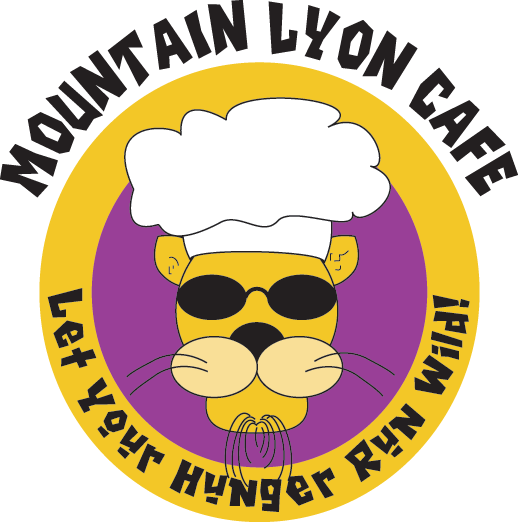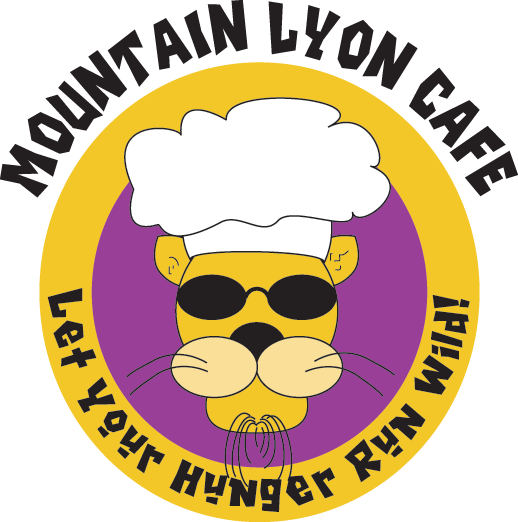Discover where to find the best coffee in the world with our expert guide to the top coffee cities, unique beans, and cultural must-tries for true coffee lovers.
If you’ve ever wondered where to find the best coffee in the world, you’re not alone. For many, coffee is more than a beverage—it’s a ritual, a culture, a source of joy, and even a passport to understanding a new place. From the highlands of Ethiopia to the bustling cafés of Melbourne, exploring the globe through its specialty coffee scenes reveals unique flavors, ancient traditions, and passionate craftsmanship. In this article, we’ll take you on a flavorful journey to the most revered coffee destinations around the world and teach you how to judge a truly great cup of coffee like a seasoned barista.
The World’s Best Coffee: What Defines “Best”?
Before we brew the world map, it’s important to define what “best” really means in the context of coffee quality. Is it the rich aroma? The perfect crema? Or perhaps the cultural experience of sipping a cup amidst lively locals? The answer lies in a fusion of taste, tradition, terroir, and technique.
Key Factors That Define Top-Tier Coffee
Origin: The country and region where the coffee is grown influence everything from acidity to aroma.
Varietal: Arabica vs. Robusta, with sub-varieties such as Bourbon, Typica, and Geisha.
Processing method: Washed, natural, or honey—each method brings out different flavor profiles.
Altitude and climate: Higher altitudes typically result in more complex, flavorful beans.
Roasting and brewing: The barista’s technique and the freshness of the roast can elevate or diminish the experience.
“Coffee is a language in itself.” – Jackie Chan
And in that language, the best dialects are found across continents.
10 Countries with the Best Coffee in the World
1. Ethiopia – The Birthplace of Coffee
No list of the best coffee destinations can begin without Ethiopia. Known as the origin of the Arabica bean, Ethiopia’s high-altitude farms produce legendary varietals like Yirgacheffe, Sidamo, and Harrar. Expect floral, citrusy, and tea-like notes—especially in washed coffees.
The Ethiopian coffee ceremony is a cultural cornerstone. It’s not just about drinking coffee; it’s about honor, hospitality, and heritage. Beans are pan-roasted, ground, and brewed in a traditional pot called a jebena—served three times to signify respect.
Fun Fact: Coffee’s name is believed to have derived from “Kaffa,” a region in Ethiopia.
2. Colombia – Mountain-Grown Richness
Colombia’s coffee-growing regions—like Antioquia, Huila, and the Coffee Triangle (Zona Cafetera)—offer rich, medium-bodied Arabica beans known for caramel sweetness, nutty undertones, and balanced acidity.
In 2011, UNESCO declared Colombia’s coffee cultural landscape a World Heritage Site, underscoring its agricultural and social significance.
Top Experience: Take a coffee farm tour in Salento or Manizales, where local farmers (cafeteros) walk you through bean picking to brewing.
3. Italy – Espresso Artistry and Culture
Italy is the home of espresso culture. While the country may not grow its own beans, it certainly perfects how they’re served. From Rome’s historic Sant’Eustachio Il Caffè to Milan’s modern Illy Cafés, Italy is where coffee becomes art.
Espresso: Short, sharp, intense—an Italian staple
Macchiato: A touch of milk for balance
Cappuccino: Frothy morning favorite (but never after 11 a.m., according to locals)
“Un caffè, per favore.” That one phrase will open doors across Italy.
4. Brazil – World’s Coffee Powerhouse
Brazil is the largest coffee producer in the world, responsible for nearly 40% of global supply. While quantity is high, so is quality—especially from regions like Minas Gerais, Espírito Santo, and São Paulo.
Expect full-bodied coffee with low acidity and notes of chocolate, nuts, and dried fruit. Much of Brazil’s coffee is naturally processed, lending it a deeper, heavier flavor profile.
Brazil’s role is essential in the commodity market, but it also champions the specialty movement, with micro-lots gaining recognition worldwide.
5. Vietnam – Robusta Revolution
Vietnam is synonymous with strong, bold, and unique coffee. As the largest producer of Robusta beans, Vietnam has turned what was once seen as an inferior varietal into a national treasure.
Signature styles include:
Cà phê sữa đá (iced coffee with sweetened condensed milk)
Cà phê trứng (egg coffee)
Coconut coffee – creamy, refreshing, and unforgettable
Brewing typically involves a phin filter, a stainless-steel drip brewer that extracts bold and aromatic flavors over ice or milk.
See more: 10 Colorado State Parks to Visit This Summer
6. Yemen – Ancient Mocha Traditions
Mocha isn’t just a chocolatey café drink—it’s a port city in Yemen, one of the oldest coffee-trading hubs in the world. Yemeni coffee is prized for its complex, winey flavors and is typically dry-processed, which enhances fruit and spice notes.
The political situation has made sourcing Yemeni coffee difficult, but when available, it is often roasted and served in its most natural form—rich, unfiltered, and earthy.
A sip of Yemen’s coffee is a sip of centuries-old tradition and resilience.
7. Japan – Precision Meets Passion
Japan may surprise many with its deeply refined coffee culture. Whether it’s the slow, meditative pour-over in Kyoto or a trendy siphon brew in Tokyo’s third-wave cafés, the Japanese coffee scene is a symphony of aesthetics and precision.
Hario V60, Chemex, and siphon brewing are commonplace
Specialty cafés like Onibus Coffee and Fuglen Tokyo have international acclaim
Coffee in Japan reflects a cultural dedication to craftsmanship similar to tea ceremonies—deliberate, detailed, and deeply respectful.
8. Australia – Café Innovation in Melbourne
Australia’s café culture—particularly in Melbourne—is globally recognized for its flat whites, batch brews, and brunches. Unlike traditional coffee-drinking nations, Australia emphasizes sustainable sourcing, creative blends, and stylish interiors.
Aussie baristas are often at the forefront of global coffee competitions, pushing innovation and refining espresso-based drinks to perfection.
“Australia didn’t invent coffee, but it perfected the café.” – Coffee enthusiast at the World Barista Championship
9. Turkey – Coffee with a Ritual
In Turkey, coffee isn’t just a beverage—it’s a UNESCO-recognized cultural heritage. Traditional Turkish coffee is finely ground, brewed in a cezve over hot sand or an open flame, and served unfiltered in small cups with a side of water and sometimes Turkish delight. The result is a rich, thick, and intense drink often accompanied by conversation, fortune-telling from coffee grounds, and hospitality rituals. Turkish coffee is deeply embedded in social events like marriage proposals and community gatherings.
“A cup of coffee commits one to forty years of friendship.” – Turkish Proverb
Coffee is seen as a symbol of respect and bonding. And unlike espresso culture, there’s no rush—Turkish coffee is meant to be sipped slowly, appreciated for its strength and the story it tells.
10. USA – Specialty Coffee Capital in Portland & San Francisco
The United States may not be a coffee-growing country, but it has been a global innovator in specialty coffee. The third-wave coffee movement, which began in cities like Portland, San Francisco, and Seattle, prioritizes direct trade, ethical sourcing, roast transparency, and advanced brewing techniques. Independent roasters like Stumptown, Blue Bottle, and Intelligentsia have set global standards for quality.
You’ll find experimental brews using single-origin beans, nitrogen-infused cold brews, and creative latte art in American cafés. Moreover, the Specialty Coffee Association of America (SCAA) plays a leading role in certifying baristas, scoring beans, and standardizing excellence.
The Best Coffee Shops Around the Globe
While countries provide the terroir, individual cafés and roasteries transform those beans into magical experiences. Whether you’re a casual sipper or a hardcore taster, these shops are global must-visits:
| Country | Café Name | City | Known For |
|---|---|---|---|
| France | Café de Flore | Paris | Classic Parisian charm |
| Norway | Tim Wendelboe | Oslo | Award-winning barista precision |
| USA | Blue Bottle | San Francisco | Minimalist design & single-origin |
| Japan | Onibus Coffee | Tokyo | Slow pour-overs & calm aesthetic |
| Colombia | Café San Alberto | Bogotá | 5-step signature brewing ritual |
| Australia | Industry Beans | Melbourne | Tech-enabled, award-winning roasting |
These venues don’t just serve coffee—they shape global coffee trends and offer memorable sensory experiences. Lyoncafe’s international partners and roasters have collaborated with many of these giants in pursuit of excellence—learn more at sienna-pony-277127.hostingersite.com.
How Climate and Altitude Affect Coffee Flavor
The geography of coffee is vital in determining its profile. Beans grown at high altitudes—above 1,200 meters—mature slowly, which enhances their complexity and acidity. Volcanic soils, abundant in minerals, often yield more vibrant flavors. For example:
Ethiopia: High altitude + heirloom varietals = floral & citrusy
Colombia: Mountain ranges + washed processing = clean & sweet
Guatemala: Volcanic soil + shade = chocolate & spice notes
Processing methods also impact flavor:
Washed (Wet): Clean, bright, acidic
Natural (Dry): Fruity, heavier, unpredictable
Honey Processed: Balanced, syrupy mouthfeel
“Like grapes in wine, coffee beans are the fruit of place.” – Coffee Terroir Advocate
These environmental variables are why true coffee connoisseurs seek origin transparency, and why Lyoncafe only sources beans with verified altitude and harvest data.
Coffee Culture vs. Coffee Quality: Which Matters More?
Is it the technical excellence of a cup or the cultural richness of the experience that defines the best coffee? In Italy, you’ll find espresso pulled with military precision—but it’s the barista’s smile and your place at the bar that completes the moment. In Vietnam, the phin filter is humble, but the flavors explode with character.
A balanced coffee journey values both:
Culture brings depth: tradition, community, and ambiance
Quality brings clarity: flavor integrity, freshness, sourcing
Third-wave coffee shops often try to combine both worlds, offering origin-rich storytelling, barista education, and inviting, artistic spaces. Lyoncafe’s own philosophy reflects this union—coffee as a ritual of quality and connection.
Tips for Coffee Travelers and Enthusiasts
Planning your coffee pilgrimage? Here are some expert tips to enhance your journey:
Research seasonal harvests: Visit Ethiopia between October and December, Colombia from March to May.
Book coffee farm tours: They offer insight into drying, roasting, and brewing at origin.
Pack your brew kit: A travel-sized grinder, Aeropress, or V60 ensures consistency on the road.
Visit local festivals:
London Coffee Festival (April)
Melbourne International Coffee Expo (May)
Seoul Café Show (November)
Join cupping sessions: Train your palate to detect acidity, body, aroma, and defects.
Use apps like Beanhunter or Lyoncafe Explorer (coming soon) to locate ethical and highly-rated cafes globally.
“To know a place, sip its coffee.”
How to Judge a Cup of Coffee Like a Pro
Professional coffee evaluation—known as cupping—involves more than just taste. It’s a systematic way to assess quality and distinguish nuances.
Basic Cupping Criteria:
| Attribute | What It Measures |
|---|---|
| Fragrance/Aroma | Dry and wet smell of the ground coffee |
| Acidity | Brightness or sharpness on the tongue |
| Body | The weight or thickness of the coffee |
| Flavor | The combination of taste and aroma |
| Aftertaste | How long and pleasant the flavor lingers |
Use a spoon to slurp the coffee and aerate it across your palate. Note flavor notes such as berry, citrus, chocolate, nuts, earth, or floral. At Lyoncafe’s training center, professional cuppers use a 100-point scale to grade every harvest.
Final Thoughts: Where You Might Find the Best Coffee in the World
So, where exactly is the best coffee in the world? The answer is beautifully subjective. For some, it’s the intense, smoky espresso of Naples. For others, it’s the floral notes of a Kenyan peaberry, or the soft sweetness of a Panama Geisha in a Tokyo café.

I’m Kara Chavez, and I love coffee. I like to create some of the best coffees around – espressos, lattes, macchiatos . I strive for perfection in my coffee-making skills, and I take great pride in providing a delicious cup of joe to my customers.
I’ve been working in the coffee industry for years now, and I know everything there is to know about making a perfect cup of coffee. My passion for coffee shines through in every cup that I make, and I hope that you’ll stop by soon so that I can share my love of coffee with you!

